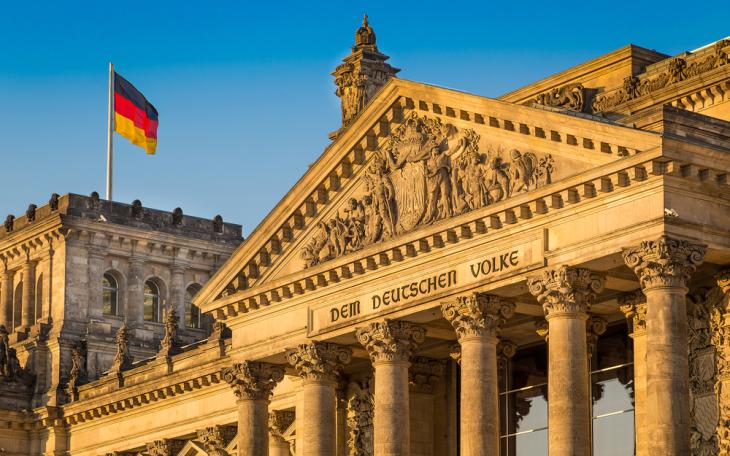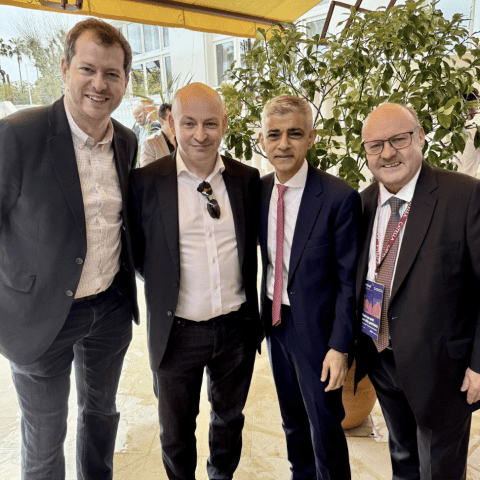The New German Chancellor and Government

By Dr Björn Weber, SEC Newgate Germany
The new German chancellor and government are in place: On Wednesday, 8 December, Olaf Scholz was sworn in as Germany’s chancellor, marking the end of Angela Merkel’s 16-year tenure.
Scholz’s Social Democratic Party (SPD) won the most votes in the federal election in September and will now govern together with the Greens (Bündnis 90/Die Grünen) and the Liberals (Freie Demokratische Partei, FDP) in the first ever three-party coalition, aka the “traffic light-coalition” after the signature colors of the parties involved. The coalition agreement was approved last week by members of all three parties after negotiations were shaped by the respective party agendas.
Chancellor Olaf Scholz
Who is the new chancellor taking over from Angela Merkel, who shaped the German political landscape over the last 1,5 decades? Olaf Scholz is a 63-year-old politician in the center-left Social Democratic Party. He has held a wide range of posts: member of parliament, mayor of Hamburg, labour minister and, in the last Merkel government, finance minister and vice chancellor.
The New Cabinet
Scholz’s vice-chancellor will be Robert Habeck, who leads the Greens together with Annalena Baerbock. Habeck will head the economy and climate ministry, while Baerbock will become the new foreign minister.
The most closely watched appointment has been that of the health minister, as Germany currently struggles to bring down its highest coronavirus infection rates of the pandemic. Scholz, despite internal discrepancies, chose Karl Lauterbach, an epidemiologist and media-savvy politician who has been one of Germany’s most prominent voices urging caution and strict measures against COVID-19.
An interesting fact about the new cabinet is that all ministries in charge of national and international security and diplomacy are headed by women. As mentioned earlier, Annalena Baerbock will be foreign minister. Social Democrat Nancy Faeser is set to be interior minister and Christine Lambrecht will be defense minister. In total, eight of the 16 cabinet members will be women.
The Green’s Cem Ozdemir will be agriculture minister, becoming the first German cabinet member of Turkish descent. Christian Lindner, chairman of the Free Democrats, will be minister of finance. For the FDP, this is considered the greatest triumph of the coalition’s negotiations.
Foreign Policy and Political Challenges
In terms of foreign policy, no radical changes are suspected. Like Merkel, Scholz is expected to follow the European, trans-Atlantic orientation of German foreign policy. A closer focus will also be placed on the French-German connection, fostered by the new government’s will for a “strategic sovereignty” – pulling away from (over)reliance on US military.
The coalition agreement also features better and closer relations with the UK, including a closer working relationship where possible, on issues of international importance, e.g. Russia-Ukraine conflict. Nevertheless, Scholz has already made clear that Berlin’s loyalty is with Brussels in case post-Brexit tensions should arise between the UK and the EU.
A harsher, at least tonally, response to countries like Russia and China is expected.
However, the first challenge to tackle for Scholz and his cabinet surely will be governing Germany’s way out of the depths of the pandemic. Tougher rules have already been decided upon and it is now up to Scholz to follow through on them, while convincing the large number of unvaccinated Germans to get vaccinated.
Finally, it will be crucial for the new government – the first “traffic light coalition” on the federal level – to prove it can govern as a unified coalition. It will be essential in making the economy more competitive, improving people’s lives, whilst also lessening its impact on the planet. One of the biggest challenges for the new chancellor may be the managing of the political differences among the coalition partner parties.









